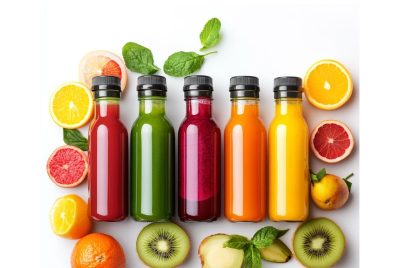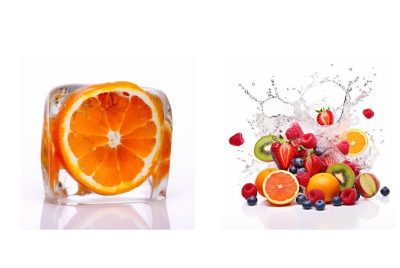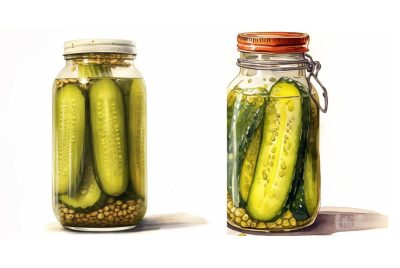What to Do with Pulp from Your Juicer
Have you ever wondered, what to do with pulp from your juicer? As an avid juicer, I understand the dilemma. We relish the vibrant, nutrient-packed juices, but the leftover pulp can be a bit of a mystery. Fear not, because I have some creative and wholesome ideas for your juice pulp. You won’t be wasting a single bit!
I understand the excitement and satisfaction that comes from extracting fresh juice at home. But what about the pulp left behind in the juicer? Many people find themselves wondering what to do with the pulp, reluctant to discard it as waste.
The good news is that there are numerous creative and resourceful ways to put that leftover pulp to good use, ensuring nothing goes to waste.
In this blog post, I’ll share valuable suggestions and reasons for utilizing pulp from your juicer, offering a wide range of practical and exciting possibilities.
Understanding the Value of Juice Pulp
Before we dive into the recipes and techniques, it’s crucial to understand why we should bother using the pulp in the first place. Juice pulp is a treasure trove of dietary fiber and essential nutrients. It can enhance the texture and nutritional profile of various dishes.
What is pulp?
Pulp refers to the fibrous residue left over after juicing fruits and vegetables. It consists of the skins, seeds, and other plant matter that remain after the liquid has been extracted. Depending on the type of juicer used and the ingredients juiced, the pulp can vary in texture and moisture content.
Importance of pulp in juicing
While the main focus of juicing is obtaining nutrient-rich liquids, it’s essential to recognize the value of the pulp. Pulp contains dietary fiber, which is beneficial for digestion and overall gut health. It also retains some vitamins, minerals, and antioxidants. By finding ways to utilize the pulp, you can maximize the benefits of your juicing routine.
Nutritional Richness of Pulp
You see, when we juice fruits and veggies, we extract the liquid filled with vitamins and minerals. But the solid part, the pulp, carries the fibrous content. This fiber is key to digestive health, and it’s also associated with lower risks of heart disease, diabetes, and obesity. So, if you’ve been throwing away the pulp, you’ve been missing out on some important health benefits.
A Colorful Palette of Pulp Possibilities
There are many creative and tasty ways to use the pulp. Let’s explore some of the best methods, shall we?
Incorporate pulp into recipes
Baked goods: Add fruit or vegetable pulp to muffins, bread, or cookies for added flavor, texture, and nutritional value. Carrot pulp can be used in carrot cake, while apple or pear pulp can enhance spice bread.
Soups and stews: Boost the nutritional profile of your homemade soups and stews by incorporating vegetable pulp. It can add thickness, fiber, and a burst of flavor. Consider using celery or tomato pulp in tomato soup or carrot pulp in a hearty vegetable stew.
Smoothies and shakes: Add fruit pulp to your smoothies or shakes to give them a thicker consistency and an extra punch of flavor. The pulp will contribute additional fiber and nutrients to your refreshing beverages.
Composting pulp for a sustainable approach
Composting is an excellent way to recycle organic waste and create nutrient-rich soil for your garden. The pulp from your juicer can be added to a compost pile or bin, where it will break down and decompose, eventually transforming into valuable compost. This compost can be used to enrich the soil for future gardening endeavors.
Feeding pulp to pets or livestock
If you have pets or livestock, consider incorporating pulp into their diet. Pulp can be mixed with regular pet food or used as a treat. It adds variety, texture, and extra nutrients to their meals. However, always ensure that the pulp is suitable for the specific animal and consult with a veterinarian if needed.
Creating Homemade Face Masks and Scrubs
The pulp from certain fruits and vegetables can work wonders for your skin. Create homemade face masks and scrubs by combining pulp with other natural ingredients like honey, yogurt, or oatmeal. For example, cucumber pulp mixed with yogurt makes a refreshing and hydrating face mask, while coffee grounds combined with orange pulp create an invigorating scrub.
Enhancing Your Garden with Pulp
Use pulp as a natural fertilizer in your garden. Dig small trenches in the soil and bury the pulp, allowing it to decompose and release nutrients into the ground. This will enrich the soil and benefit the growth of your plants.
Donating Pulp to Local Farms or Gardens
Connect with local farms, community gardens, or urban agriculture initiatives and inquire if they accept pulp donations. Many farmers and gardeners use pulp as compost or animal feed. Donating your pulp supports sustainable practices and local food production.
Making Natural Fiber Art and Crafts
Get creative with your leftover pulp by transforming it into paper or other fiber-based crafts. Blend the pulp with water, spread it onto a screen, and press out the excess moisture to create handmade paper. You can also add natural dyes or pressed flowers for added visual appeal.
Creating Nutrient-rich Broths and Stocks
Use vegetable pulp as a base for homemade broths and stocks. Boil the pulp with water, herbs, and spices to extract flavors and nutrients. This flavorful liquid can be used as a base for soups, sauces, or even to cook grains like rice or quinoa.
Pulp Ice Cubes for Flavorful Beverages
Freeze the pulp in ice cube trays to create flavor-packed ice cubes. These cubes can be added to water, juice, or even cocktails for an extra burst of taste. They are particularly refreshing on hot summer days and a great way to use up pulp.
Dehydrating Pulp for Snacks
Spread the pulp onto a baking sheet and dehydrate it in a low-temperature oven or a food dehydrator. Once dried, the pulp can be transformed into crunchy snacks, like vegetable chips or fruit leather. These snacks are not only delicious but also a healthy alternative to store-bought options.
Pulp in Baked Goods
Juice pulp can add moisture, texture, and flavor to baked goods. Plus, it’s a clever way to sneak in some extra nutrients!
Muffins
Imagine starting your day with a warm, fluffy muffin made with apple and carrot pulp. It’s sweet, moist, and packed with fiber. Just replace a portion of the flour in your recipe with pulp, and voila!
Bread
Did you know that juice pulp can also be added to bread? Use it to replace some of the flour in your bread recipe for a nutrient-boosted loaf.
Crackers
Up your snack game with homemade pulp crackers. Combine pulp, seeds, and spices, bake until crispy, and enjoy with your favorite dip.
Pulp in Main Meals
From adding depth to your dishes to being the star of the show, pulp can do it all.
Veggie Burgers
Give your veggie burgers an upgrade by incorporating juice pulp. The pulp adds volume and fiber, creating a satisfying and filling patty.
Pasta Sauce
You can also stir pulp into your pasta sauce. It will thickens the sauce, adding a delightful texture and a subtle veggie flavor.
Soups
Or maybe blend pulp into a creamy soup for a nutrient-boost. It’s a delicious and cozy way to warm up and fill up!
Pulp in Breakfast
Why not start your day off with a dose of fiber-rich pulp?
Smoothie Bowls
Mix pulp into your smoothie bowl. It adds fiber and makes your breakfast bowl even more filling.
Granola
You can also bake pulp into homemade granola. The result? Crunchy, nutrient-dense granola perfect for your breakfast.
Pancakes
Ever tried pulp pancakes? Substitute some flour with pulp in your pancake batter for an exciting breakfast twist.
Pulp for Snacks
Yes, pulp can be a part of your mid-day munchies too!
Pulp Chips
Bake pulp with some seasoning into thin, crispy chips. It’s an easy, healthy, and addictive snack!
Energy Balls
Mix pulp with nuts, seeds, and dried fruits to make energy balls. A quick, nutritious snack perfect for those on-the-go moments!
Creative Juice Pulp Ideas Beyond the Kitchen
Your juice pulp can be valuable outside the kitchen as well.
Composting
If you have a garden, composting is a great way to recycle pulp. It enriches the soil and reduces waste.
Pet Food
In moderation and with vet approval, certain types of pulp can be added to pet food for extra fiber.
Natural Dye
Some pulps, like beetroot, can be used as natural dyes for DIY projects.
Considerations when Using Juice Pulp
Keep in mind that the type and freshness of the pulp can impact its taste and usage. Always use fresh pulp and adjust seasoning according to the flavor profile of the pulp. Not all pulp types may be suitable for all recipes.
Conclusion: The Joy of Pulp
As you can see, there are countless ways to use juice pulp. It’s not just waste; it’s a vibrant ingredient that can transform your dishes, boost your fiber intake, and reduce your ecological footprint. So next time you juice, save that pulp and embrace its potential!
Frequently Asked Questions (FAQs)
1. Can all types of juice pulp be used in the same way?
No, different pulps have distinct tastes and textures, so they work better in some recipes than others.
2. Can I store juice pulp?
Yes, you can refrigerate it for a few days or freeze it for longer-term storage.
3. Can I feed juice pulp to my pets?
While some pulps can be used in moderation as pet food, always consult your vet first.
4. Can pulp be used in sweet and savory dishes?
Absolutely! Depending on the pulp, it can be a versatile addition to both types of dishes.
5. Do I need to adjust my recipe when using pulp?
In some cases, yes. For example, in baking, you might need to reduce the liquid or increase the flour when adding pulp.
Relevant resources that you can refer to for more information:
- Fiber in fruits and vegetables: This page provides information on the nutritional value of fiber in fruits and vegetables, much of which can be found in the pulp left after juicing.
- Food waste as a valuable resource for the production of chemicals, materials and fuels – ScienceDirect: This scientific study explores the potential of food waste (including juice pulp) as a resource for various applications, supporting the argument for creative use and recycling of juice pulp.




